07 june 2023, Wouter van den Eijkel
Creatures!
A man-sized, tattooed Hercules with a bearskin covering his head, shoulders and back, a young unicorn, shamans, men of sorrow and a Venus covered in pearls. A selection of the works of Carolein Smit can now be seen in the duo exhibition Creatures! at the Fontana gallery. Smit's sumptuously detailed sculptures are not only a masterpiece of craftsmanship, but she does not shy away from major themes like life and death in her work.
For Creatures!, Joris Montens and Stefan Heinis of Galerie Fontana linked the work of Carolein Smit to that of Juliane Hundertmark – and with success. Hundertmark's family portraits have something uncanny and sinister about them, yet also something humorous. There is so much happening on the canvases that you cannot fathom everything all at once. “When you enter here, you step into a kind of freaky bubble,” says Montens. Smit was not familiar with the work of German artist Hundermark, but understands why her gallerists chose her. “Her work is pretty crazy and fits well with mine. It is funny and horrifying at the same time.”
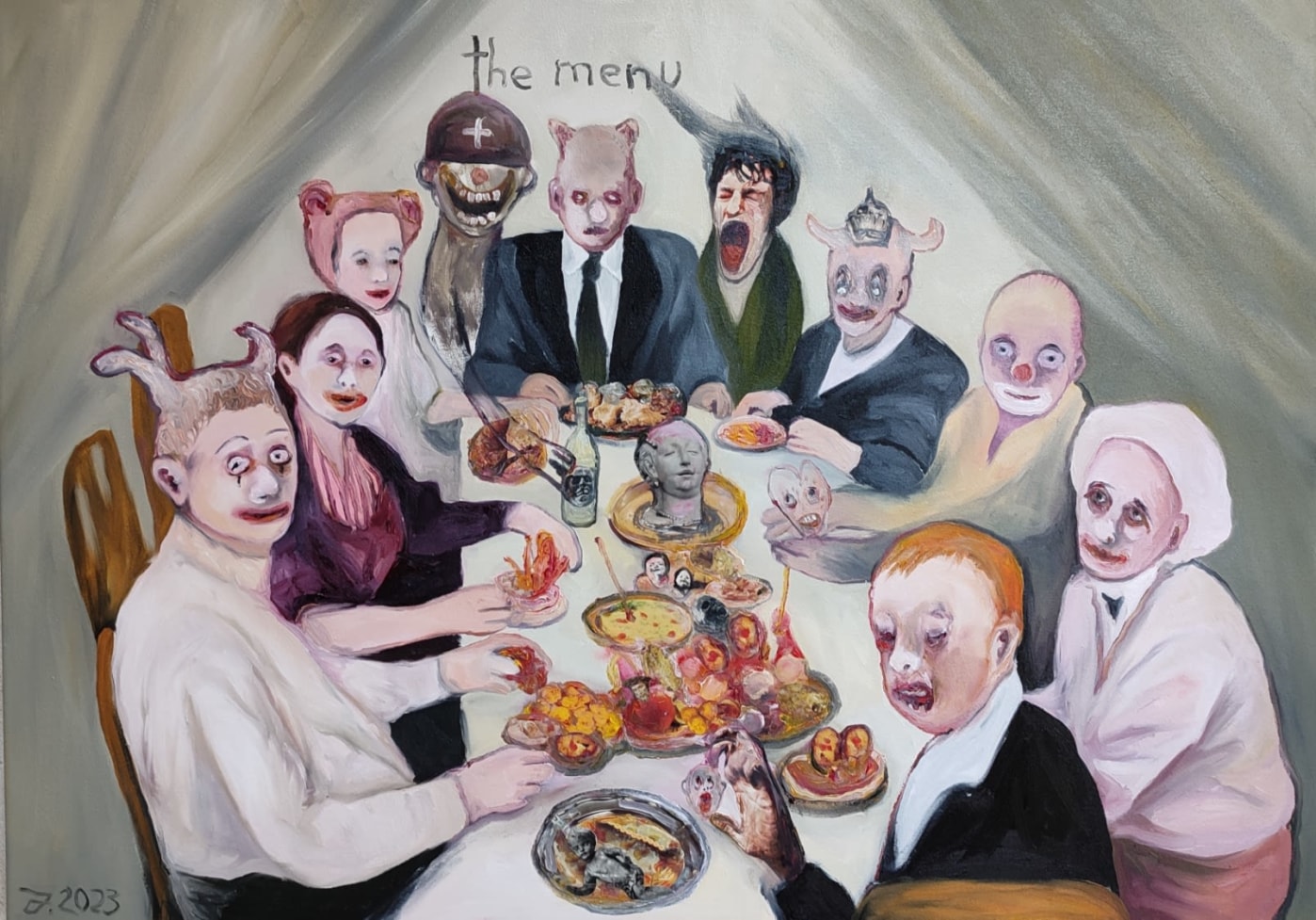
Juliane Hundertmark, The menu, 2023, Galerie Fontana
In her work, Carolein Smit (NL, 1960) takes such classical themes as life, death and nature and combines them with Biblical symbolism, anatomical studies and mythology from classical antiquity. If you didn't know any better, you might place her work just after Hieronymus Bosch's, at a time when modern science was still in its infancy, death was still the order of the day and religion dominated everyday life. The work expresses a fear of death, but also a zest for life that you associate with the 15th and 16th centuries. Smit shares yet another habit with Hundertmark: both are collectors and purchase some of their visual materials at flea markets.
Creatures! offers an excellent opportunity to enjoy an overview of Smit's oeuvre, as this many sculptures by her are rarely exhibited at the same time, according to Montens. “These images came from Carolein’s solo exhibition at the Musée de la Chasse et de la Nature in Paris. That show was a great success. In terms of visitor numbers, it was only surpassed by the well-known French artists Eva Jospin and Sophie Calle.” Smit's career was given a boost five years ago with an exhibition at the Victoria & Albert Museum, the London museum focusing on crafts and applied arts.
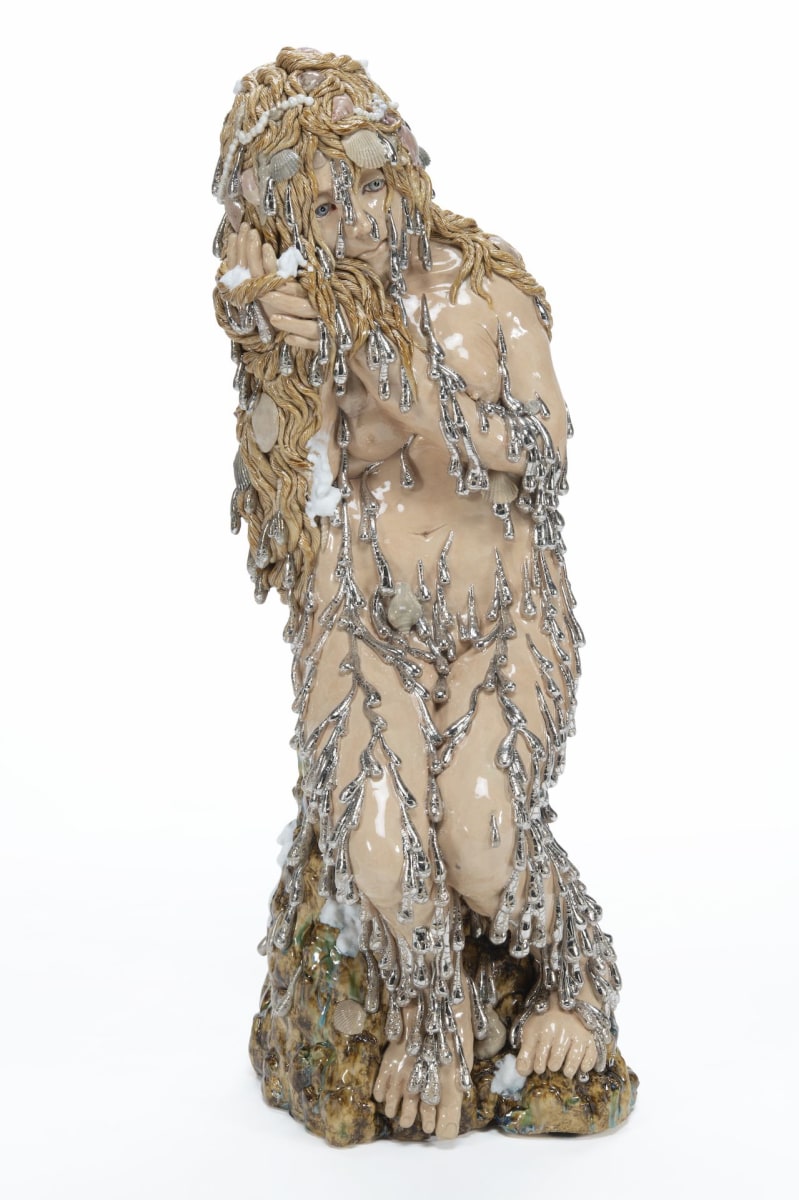
Carolein Smit, Venus, 2022, Galerie Fontana
What is most striking about Smit’s work is the large number of details. This not only shows great craftsmanship, but like with Hundertmark's canvases, it is impossible to fully ‘read’ any of her works at a glance. For example, with the tattooed Hercules, you cannot take in all the tattoos at once. Yet Smit likes to make an exception for the pug: "Big is beautiful and a lot of details are great, but that little pug..." she sighs over the phone.
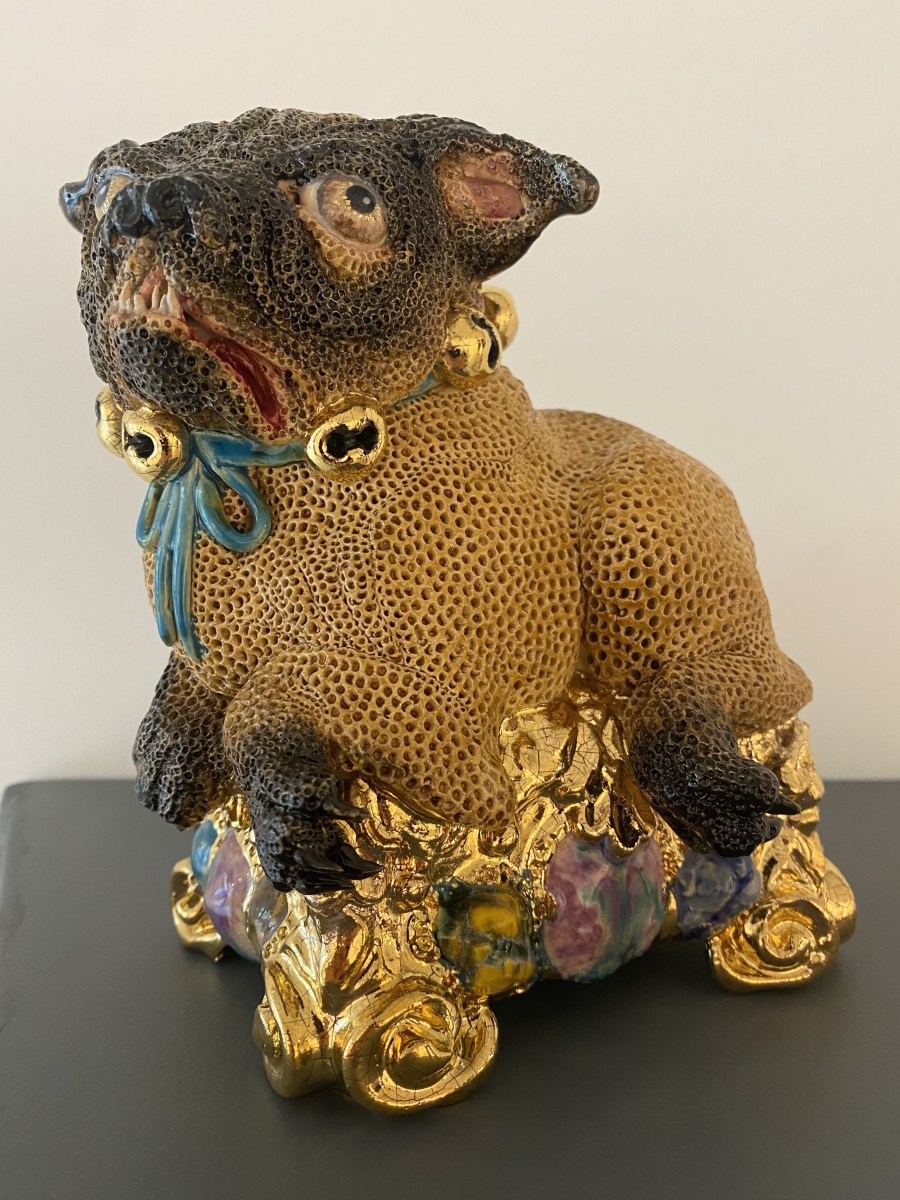
Carolein Smit, Small Pug, 2023, Galerie Fontana
“My work is also about collecting and tactility. The tattoos on Hercules, for instance, go back to the so-called margarine figures, small figures that came with margarine in Germany a hundred years ago. I buy them at flea markets. I make moulds of them and then it's simply a matter of finding the right tactility, making sure the surface feels right. Since my work is so detailed, people say it borders on kitsch, but I don’t mind. They can simply look the other way. It’s a liberal profession.”
Smit lives and works in Zussen, Belgium, just south of Maastricht, where she has a large studio and works on several sculptures at the same time. "The sculptures 'grow' about 10 centimetres a day," says Montens, pointing to the 1.40-metre-high statue of Venus.
“The only thing that limits the size of her sculptures is the size of her ovens. All sculptures are, of course, unique, but the ones she works on at the same time often show similarities. That’s why we call them ‘sister sculptures’.”

Carolein Smit, detail Hercules, 2022, Galerie Fontana
Do you accept Visa?
Smit describes her approach as intuitive. “I put countless references in my work. Things I read, collect or experience. At first, they don’t seem to have any connection, but a work often makes sense once it’s finished.”
She likes to compare herself to a fallen bookcase. “As a child, I often looked up things in an encyclopaedia. Before I knew it, two hours have passed and I had still not found what I was looking for, but lots of other interesting stuff. These days, I read a lot of books that are useful for my work. It’s even happened that I’ve walked over to the cash register in a museum shop with three stacks of books: Do you accept Visa? Yes, thank you, and please come again.”
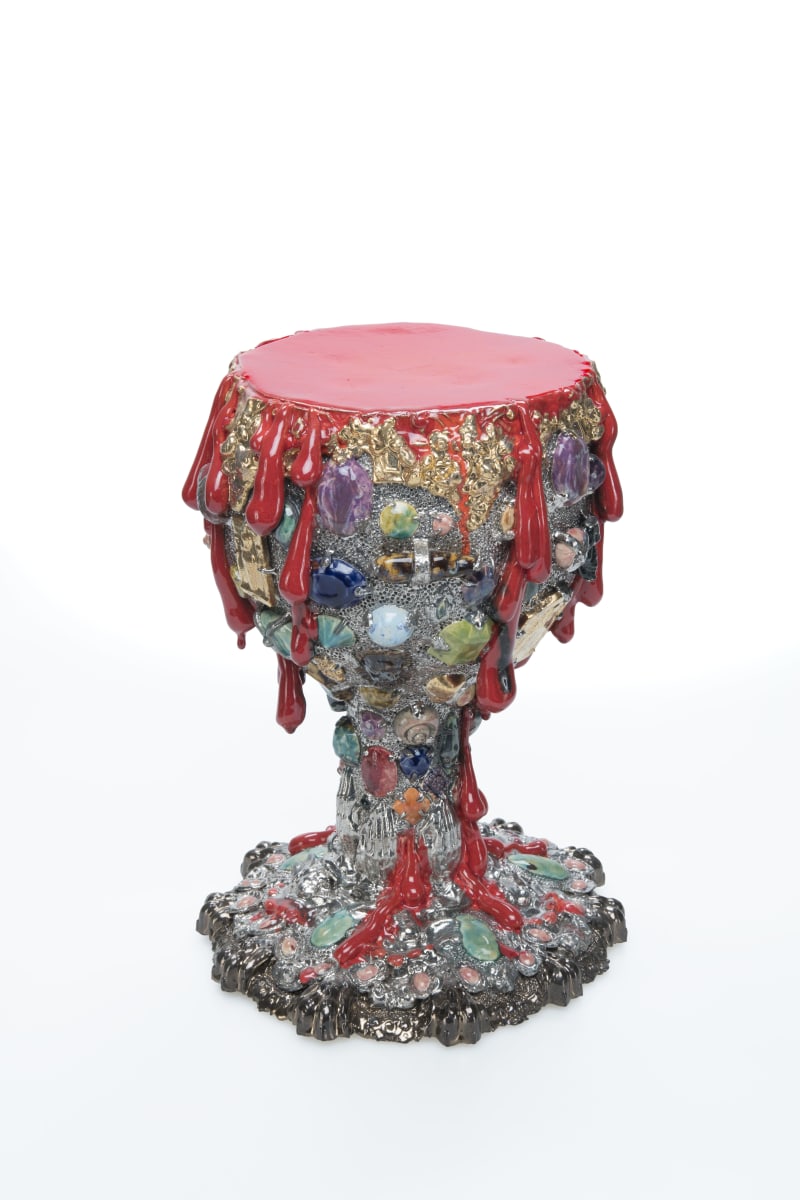
Carolein Smit, Holy Grail, 2018, Galerie Fontana
That intuitive approach is probably another reason why her sculptures are not easy to pin down. They are often not just vanitas or religious, but a playful mix of both. Smit's ‘white wall’ with a festoon of bones is cheerful and her chalice, entitled Holy Grail, is filled to the brim with blood. There are also numerous humorous elements in Smit's work, including constructive ones. “Look into the lion's mouth because his face is hidden behind the lion's teeth,” she says at the end of the conversation about the sculpture of a shaman. Now that's craftsmanship.
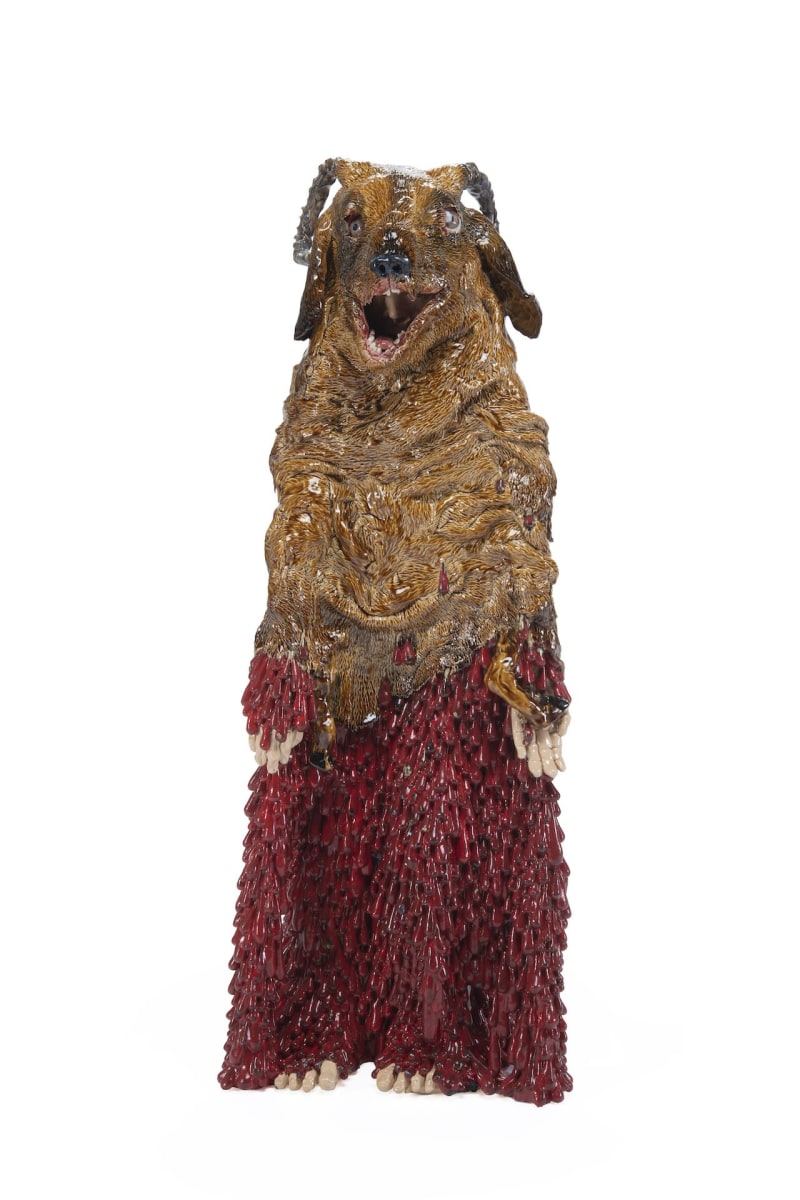
Carolein Smit, Shaman with Blood and Deerskin, 2022, Galerie Fontana
Creatures! with work by Carolein Smit and Juliane Hundertmark can be seen at Galerie Fontana in Amsterdam until 8 July
